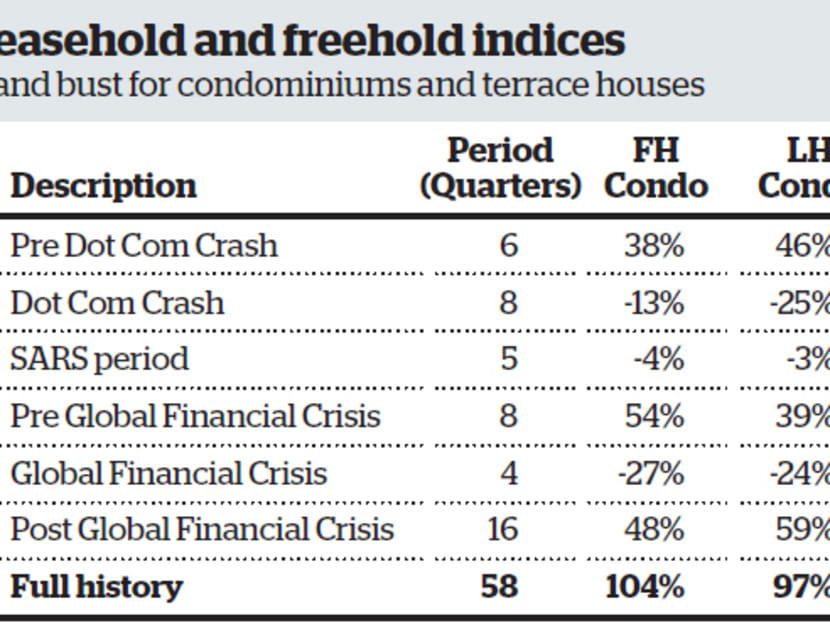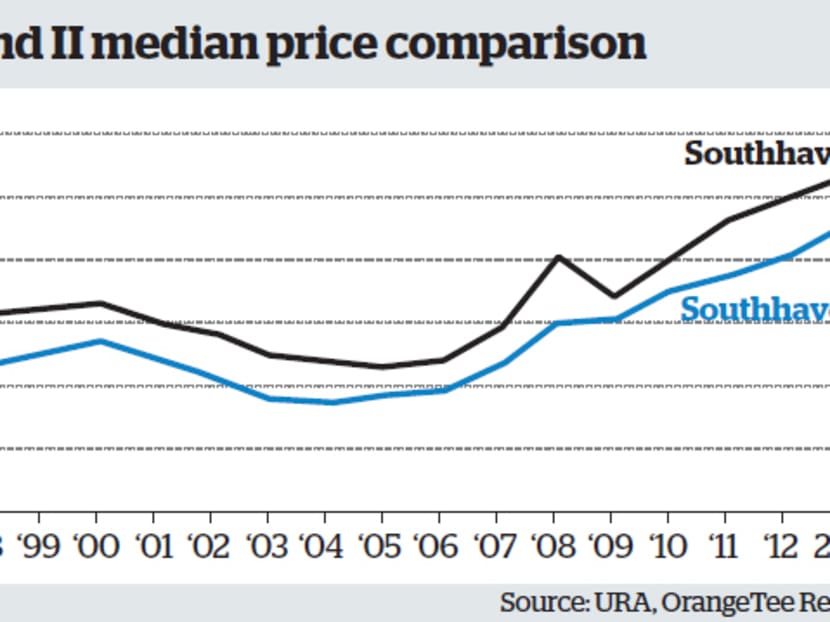Freehold not always better than leasehold
Apart from location, the next most important question on a home buyer’s mind is probably the tenure of the property.


Apart from location, the next most important question on a home buyer’s mind is probably the tenure of the property.
There are generally two types of tenure in Singapore: Ninety-nine-year leasehold and freehold. For all practical purposes, the 999-year leasehold property is considered to be the same as freehold because the difference in their values is negligible and banks will not impose any loan limits.
Freehold properties hold a few key advantages over their leasehold counterparts, namely higher en bloc potential, slower pace of depreciation and the absence of restrictions on the use of Central Provident Fund for home purchases.
In recent years, new leasehold condominiums have dominated the market. The proportions of new leasehold and freehold condo sales stand at 95 and 5 per cent, respectively, in the first half of this year. In contrast, back in 2006 and 2007, around 70 per cent of new sales were freehold. This could be attributed to the ramp-up of the Government Land Sales programme in recent years and the tightening of en bloc rules in October 2007.
Proponents of freehold properties argue that the price appreciation of such homes always outstrips that of their leasehold counterparts as the value of the latter will depreciate over the course of the lease.
In order to find out how properties with different tenures but similar attributes perform over time, let us compare two projects, Southaven I (99-year) and Southaven II (999-year). Both projects were developed by Ho Bee Group and share similar attributes such as location, product quality and facilities. Both projects were also launched for sale in 1995, but completed two years apart.
The price gap between Southaven I and II widened from only 8 per cent at its launch in 1995 to 18 per cent in 2013. However, this price trend alone is not conclusive due to uneven and thin transaction volumes. For example, in 2003, there were only five transactions for Southaven I and one for Southaven II.
The attributes of units sold in the same year were also not directly comparable as they could be on different levels or have different facings. Nevertheless, the comparison gives a good glimpse of how two projects with different tenures located right next to each other fare over time.
If we look at the broader market, freehold condominiums may not always enjoy superior price appreciation over their leasehold counterparts. An analysis of the freehold and leasehold indices over the last three property cycles shows that out of the three up-cycles, the freehold index only outperformed the leasehold index over one cycle between 3Q2006 and 2Q2008. This was the period just before the global financial crisis, when the en bloc frenzy reached an all-time high in terms of number of deals and transaction values.
During this up-cycle, the prices of freehold properties rose 54 per cent, outperforming leasehold properties, which appreciated 39 per cent. For the other two up-cycles, en bloc activity was muted, with fewer deals and much lower transaction values.
We can thus infer that en bloc potential plays a key role in determining the price performance of freehold and leasehold properties.
Interestingly, during the subsequent downturn, freehold condominiums also lost 27 per cent of their value, wider than the 24 per cent decline for leasehold condominiums.
Upon analysing the down-cycles, it emerged that, regardless of tenure, the higher the price appreciation during the upturn, the greater the fall during the downturn. This was what happened to leasehold properties during the dotcom crash. The prices of leasehold condominiums gained 46 per cent compared to 38 per cent for freehold condominiums. However, leasehold condominiums fell almost twice as much as their freehold counterparts when the market went into a slump after the dotcom crash.
In the landed segment, the performance of terrace houses seems to paint a different picture. Freehold terrace houses have outperformed the leasehold ones in all periods except for the downturn during dotcom crash.
In good times, they perform better than leasehold ones, and in downturns, they also seem more resilient. This could be because of the restrictions on foreigners owning landed properties in Singapore. Singaporeans make up 88 per cent of the buyers for landed transactions, but only three-quarters for the non-landed properties.
So, which is better, freehold or leasehold? Based on the analysis, the answer depends on whether one is buying a landed or non-landed property. If one is buying a landed property, historical data shows that freehold might be a better choice. If one is buying a leasehold non-landed property in the current up-cycle, given the challenging en bloc market, it could help to lock in more percentage gains.
It is never easy to determine which tenure is better as property values are influenced by multiple factors. The leasehold and freehold indices also have their limitations as they could be swayed by the types of transactions (data can be skewed by new launches) in the market.
All else being equal, freehold properties will always command a premium over their leasehold counterparts. Nevertheless, prospective buyers should not shy away from the latter, as well-maintained leasehold properties in excellent locations may deliver superior returns on investment compared to freehold properties with less desirable attributes.
Christine Li is Head of Research and Consultancy at property firm OrangeTee.





